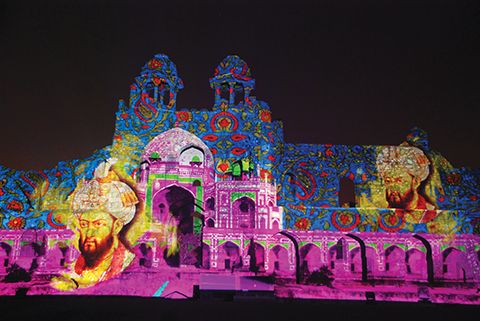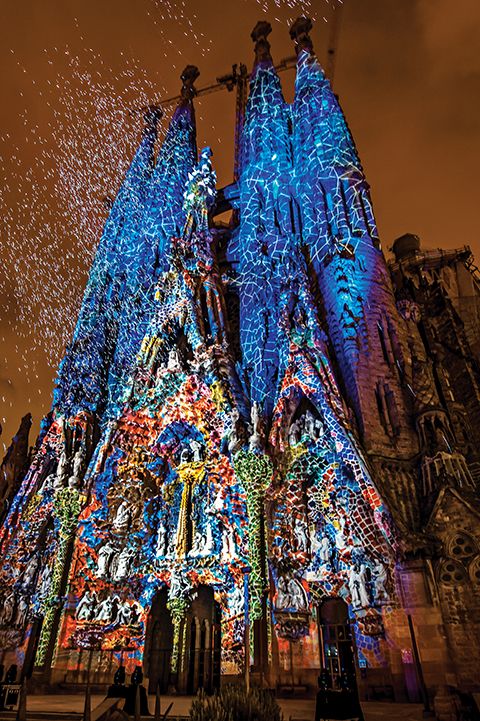By Mike Garrido
Thanks to advances in projection mapping technology, historic buildings, national monuments and even vaporized water have become fair game for digital artists to illuminate creatively at night, all around the world. From castles in France to mosques in Abu Dhabi, U.A.E., many grand structures have been visually transformed into a dynamic storytelling medium. Spirals on historic domes appear to spin, artifacts come to life and entire façades appear to fall and rise with the retelling of history.
Initially, however, it was the practical demands of corporate events that drove the development of projection mapping tools. Earlier artists had pushed the limits of slide projectors, but the 1990s saw the introduction of brighter, computer-driven commercial projectors, which started to appear at special events. Capable of producing between 5,000 and 10,000 lumens of light, they were key in helping video projection replace slide projection for many users.
Throughout the 1990s, corporations worked with staging and event management companies to use projectors to create oversized backdrops for presentations to investors, customers and the press. As a result, staging companies began keeping digital projectors in their rental inventory, allowing faster turnarounds for product launches and other special events. Over time, the general public began to see ambitious light shows projected onto flagship retail stores and landmarks.
As the equipment became brighter, rugged and portable, artists began looking at the shapes, contours and colours of structures, mapping them more specifically than simply using their façades as screens. With software that can warp and blend images for projection onto buildings’ irregular surfaces, the industry is now at the point where practically any light show that can be conceived can be achieved.
The following are just a few inspiring examples of illuminated display applications from around the world that have relied on projection mapping technology. All of them demonstrate the capability to communicate through a shared visual experience that could not be contained to a traditional canvas or screen. As such, they provide a snapshot of the world of projection mapping and a taste of what’s possible.

In 2011, ‘The Love of Delhi’ became the first permanent projection art installation in India. Photo courtesy Christie
The Love of Delhi
The ruins of 500-year-old Purana Qila fort on a hillside in Delhi, India, have provided a canvas for a pixel-mapped light and sound show that takes visitors back almost 1,000 years. The first permanent installation of projection art anywhere in the country bathes the fort’s remaining grand ramparts, parapets, alcoves and stairs with a steady procession of visuals relating Delhi’s roots, supported by narration.
Commissioned by India Tourism Development and the country’s ministry of tourism, Ishq-e-Dilli—‘The Love of Delhi’—is a 55-minute show that depicts the national capital territory through the history of its 10 ancient cities, beginning at the 11th century with the first city of Quila Rai Pithora and ending with the present day’s modern metropolis of New Delhi and its 11 million inhabitants. The story is told through archival images, maps and three-dimensional (3-D) animation, drawing content from both historical records and literature.
The audiovisual (AV) team—including projection studio Tricolor India Schauspiel and Modern Stage Services—had to work around trees on the heritage site and address changing environmental conditions, with temperatures varying between 4 and 48 C (39 and 118 F). The multiple depths of field involved in using the fort ruins as a projection surface and making the content—guided by Two’s A Film—fit appropriately were major challenges, as was a crumbling
façade that reflected colours in different shades, which required days of calibration.
Debuting in January 2011, the show is staged twice nightly—once in Hindi and once in English.






